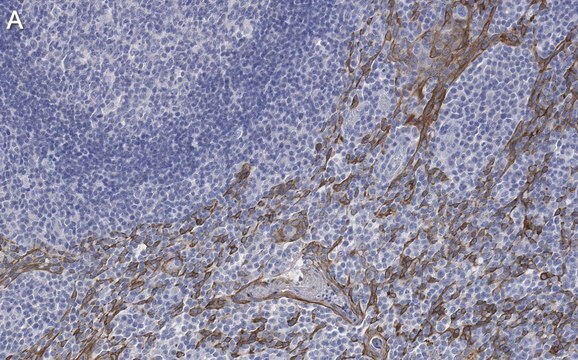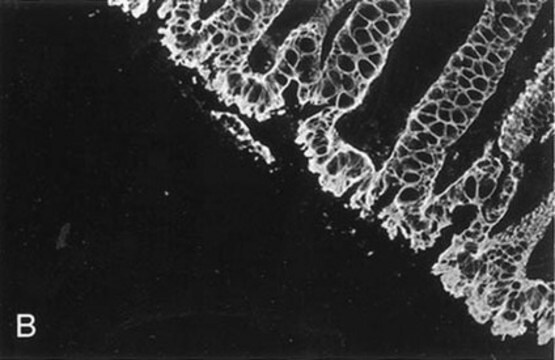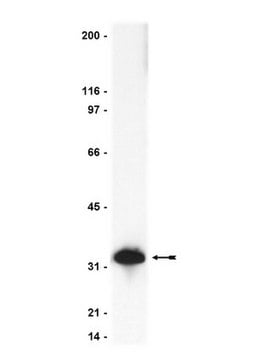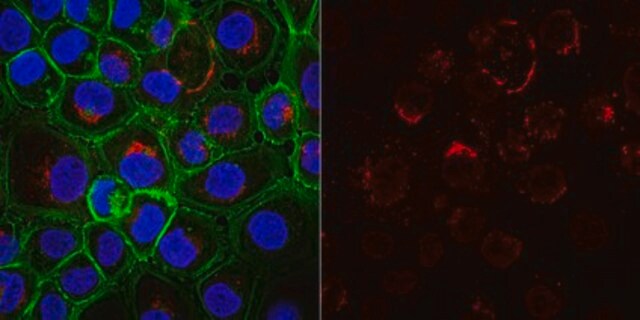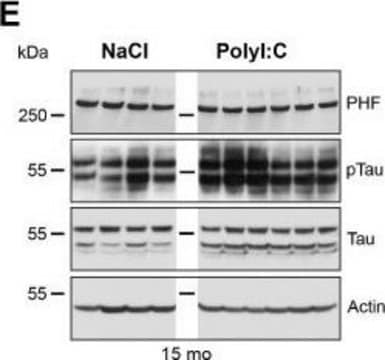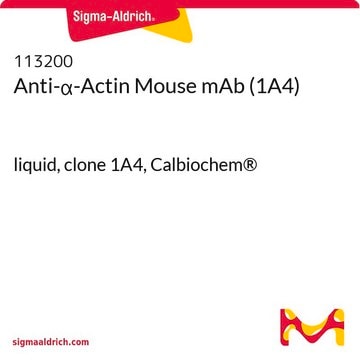MAB1620
Anti-Cytokeratin 5 Antibody, 6, clone D5/16B4
clone D5/16B4, Chemicon®, from mouse
Sinônimo(s):
58 kDa cytokeratin, Cytokeratin-5, CK-5, Keratin-5, K5, Type-II keratin Kb5
About This Item
Produtos recomendados
fonte biológica
mouse
Nível de qualidade
forma do anticorpo
purified immunoglobulin
clone
D5/16B4, monoclonal
reatividade de espécies
rat, mouse, human
fabricante/nome comercial
Chemicon®
técnica(s)
immunofluorescence: suitable
immunohistochemistry: suitable (paraffin)
western blot: suitable
Isotipo
IgG1
nº de adesão NCBI
nº de adesão UniProt
Condições de expedição
wet ice
modificação pós-traducional do alvo
unmodified
Informações sobre genes
human ... KRT5(3852)
Descrição geral
Especificidade
Imunogênio
Aplicação
A 1:50-1:100 dilution from a previous lot was used for paraffin, high-temperature antigen retrieval required (Pressure cooker, Citrate/EDTA buffer pH 6.0, 4 minutes at full pressure).
Immunofluorescence:
A previous lot of this antibody was used in Immunofluorescence.
Western blot:
Recognizes a 58kDa and 56kDa band corresponding to cytokeratin 5 and 6.
Optimal working dilutions must be determined by end user.
Cell Structure
Cytoskeleton
Qualidade
Western Blot Analysis:
1:500 dilution of this lot detected cytokeratin 5/6 on 10 ug of A431 lysates.
Descrição-alvo
forma física
Armazenamento e estabilidade
Nota de análise
A431 cell lysate, human bladder tumor tissue.
Outras notas
Informações legais
Exoneração de responsabilidade
recomendado
Código de classe de armazenamento
10 - Combustible liquids
Classe de risco de água (WGK)
WGK 2
Certificados de análise (COA)
Busque Certificados de análise (COA) digitando o Número do Lote do produto. Os números de lote e remessa podem ser encontrados no rótulo de um produto após a palavra “Lot” ou “Batch”.
Já possui este produto?
Encontre a documentação dos produtos que você adquiriu recentemente na biblioteca de documentos.
Active Filters
Nossa equipe de cientistas tem experiência em todas as áreas de pesquisa, incluindo Life Sciences, ciência de materiais, síntese química, cromatografia, química analítica e muitas outras.
Entre em contato com a assistência técnica